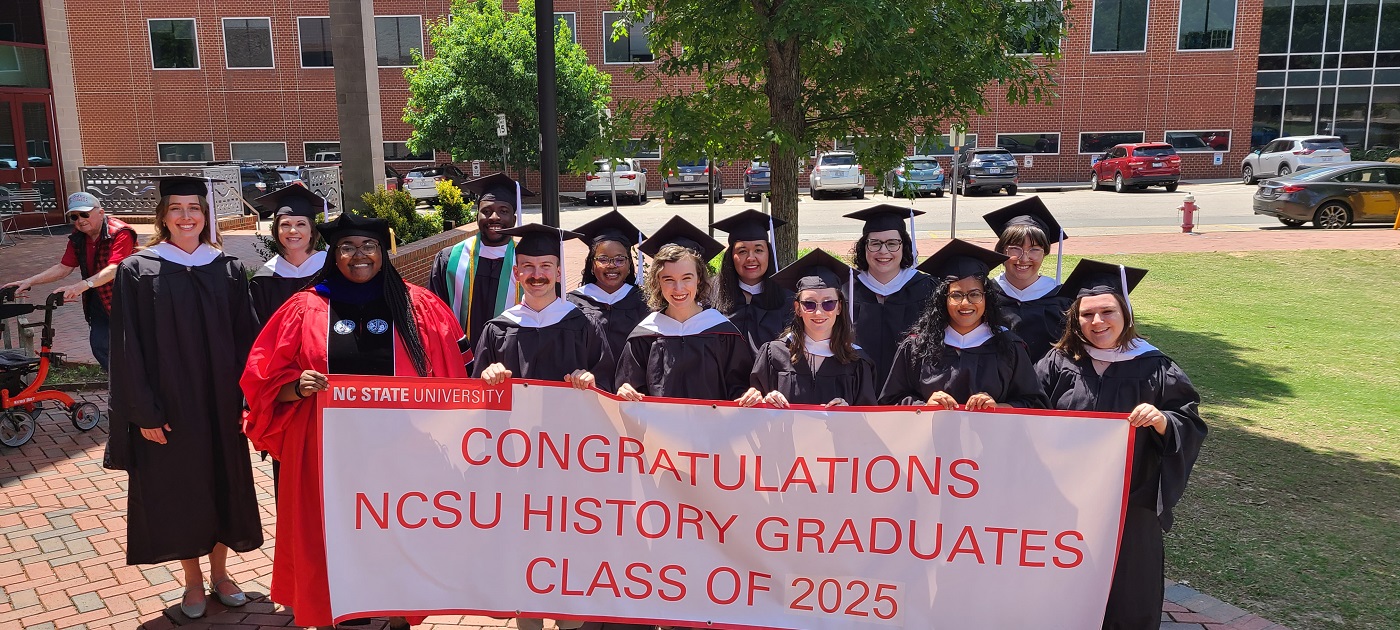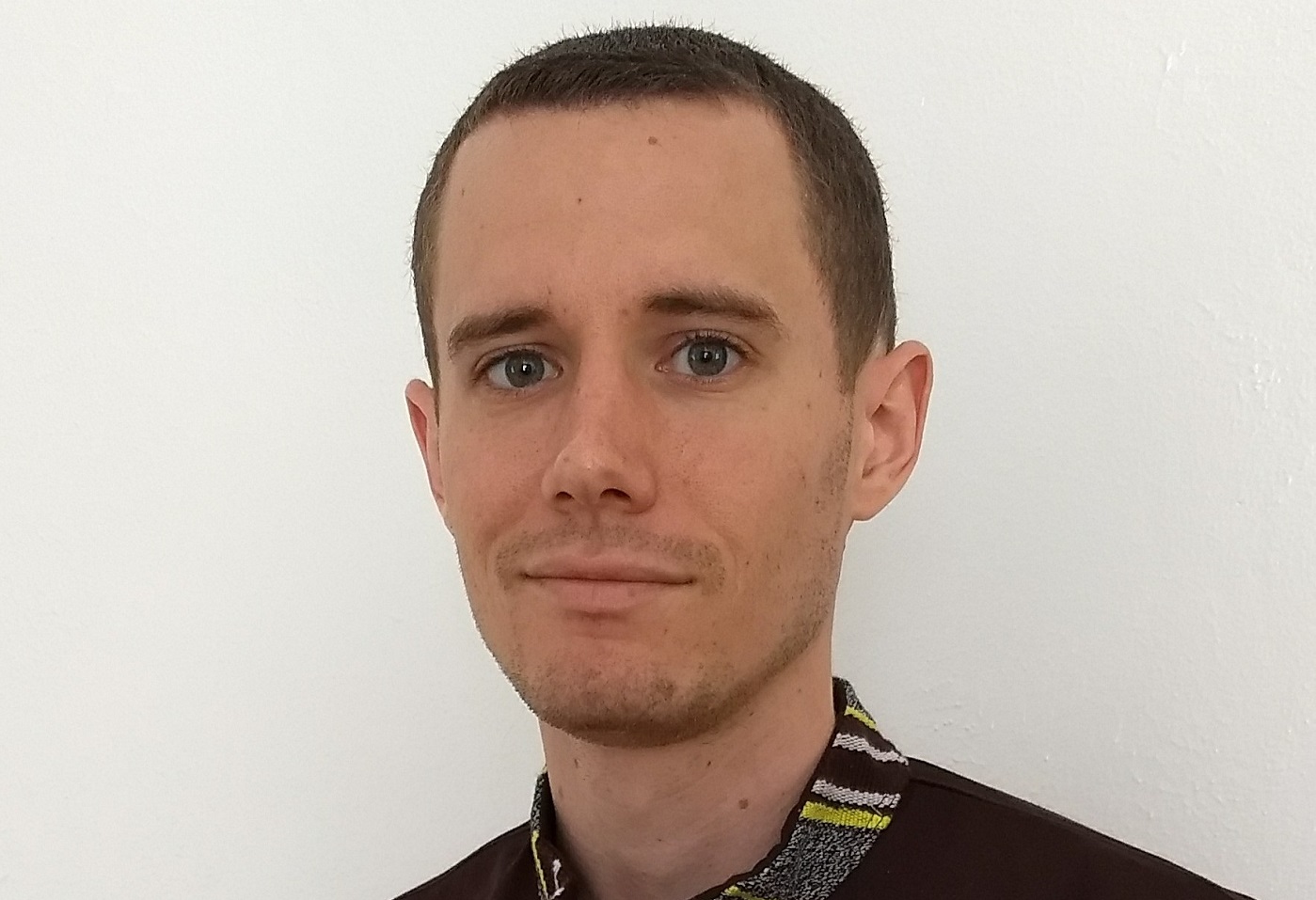Public History PhD Student, Matthew Champagne, Hits the Road to Discover how LGBT+ People are Represented at Historic Sites
Public History PhD Student, Matthew Champagne studies the intersection of gender and sexuality, and the representation of LGBT+ people at museums and historic sites. Last summer, he visited four such sites in the Southeast.
Public History PhD student, Matthew Champagne, has been working at museums and historic sites since he was 17. After receiving a BA in History and Theater at Pace University in New York, he decided to pursue a PhD in Public History at NC State University. Matthew’s research revolves around the intersection of gender and sexuality, and the representation of LGBT+ people at museums and historic sites, specifically historic house museums where heteronormative definitions of family often exclude LGBT+ people. He specifically looks at sites where same sex couples once lived before the advent of LGBT+ and how their lives are interpreted. As Matthew explains, “Because these LGBT+ individuals lived before there were positive and prideful terms to describe these experiences, it raises a very interesting public history question: How do we be historically accurate while also not cheaply reducing these relationships to “just good friends” which is the default for public historians because there isn’t literature about how to talk about sexuality and gender identities of the past that don’t clearly fit into our modern terms. Also, people didn’t define themselves like we do today. It is a fair question of how do we be fair to them.”
Even before crafting his research question, Matthew had to identify sites where the lives of historic same-sex couples were being interpreted. Having worked in the field almost ten years, he found there is a decent whisper network amongst public historians that he tapped into to find the historic sites where silencing was happening. He also used a guide published in the 1990s about the gay and lesbian historic sites in America. Additionally, he cold called every state preservation office and every state historic society in the contiguous United States and explained his research interests.
Eventually, Matthew compiled a list of forty sites across the US –the majority of them on the east coast with about half of those being in the northeast corridor. This summer he visited sites specifically in the southeast – Redcliffe Plantation in Beach Island, South Carolina, the Mercer-Williams House in Savannah, GA, the Ma Rainey House in Columbus, GA and Vizcaya Museum and Gardens in Miami, FL. His M.O. when he visits these sites is to blend in and get the typical visitor experience. He only asks questions when it’s clear it’s the end of the tour.

Matthew’s first stop was Redcliffe Plantation – a state historic site in South Carolina with a problematic history. He found that the interpreters are very honest about the history but also present it in a way that allows people to take it in. The owner of Redcliffe, James Henry Hammond, served as Governor of South Carolina and enslaved 900 people across all of his plantations. He also prolifically documented his raping of some of the enslaved women on the site. While governor of South Carolina, he was publically shamed for sexually assaulting and molesting his four nieces. He also had consensual relationships with men.
Matthew thought the tour guide did a good job in handling narratives on this very difficult history, but she did not discuss Hammond’s relationship with men. When Matthew questioned her about it, she explained that there is a very longstanding stereotype that LGBT+ people, specifically men, are pedophiles and because Hammond was a pedophile and sexual predator they chose to prioritize talking about that history and not talking about his relationships with men. They don’t want to do any harm to LGBT+ people by confirming preexisting stereotypes. So while the site does fully identify Hammond as bisexual, on their general tours, they do not. Because they haven’t yet incorporated any interpretive material about Hammond’s relationships with men, Matthew believes it’s just speculation that there would be a problematic confirmation bias on the part of their visitors.
Next stop on Matthew’s itinerary was the Mercer-Williams House. John Williams was responsible for the tourism industry in Savannah, GA as we know it today. He started a preservation business in the 50s and 60s at a time when Savannah’s city government only wanted to bulldoze the whole city and build new because they thought that would bring in development, industry and tourism. Williams, by the end of his career, was responsible for the preservation of about 60 homes in Savannah. Although Williams was a man of the 20th century who lived until the 1990s, he did not identify himself openly as a gay man even though he did admit to having relationships with men – one of whom he shot and killed in the Mercer-Williams House.
Matthew was able to do multiple tours of the Mercer-Williams house and learned that the house was initially opened as a museum by Williams’ sister. She trained the docents not to speak about her brother’s sexuality or the murder and to focus on the antiques in the house. The interpreters at the museum are still following these wishes and primarily focus on the antiques without acknowledging Williams’ personal life.
Privately, Matthew learned from a docent that she wanted to include more queer representation on the tour but was told not to. It’s clear there is a culture at the Mercer-Williams House of shame surrounding homosexuality. Says Matthew, “It’s a site that I believe is in a state of flux but they are still very much dragged down by the past interpretations of their institution.”

On the other side of Georgia, Matthew visited the Gertrude Ma Rainey House. Ma Rainey was an influential blues singer of the 1920s and 30s. Going into that site in Columbus, GA, Matthew did not have great expectations, but he was proven wrong. Without having to ask a question or make a comment, the tour guide identified Ma Rainey as a trailblazer for blacks, women and gays and acknowledged her relationship with men and women – most notably Bessie Smith. Throughout the tour, though she consistently identified Ma Rainey as a bisexual woman and acknowledged her sexuality, it wasn’t the dominant narrative, which is appropriate since she was known for so many other things. Matthew plans to devote a whole chapter of his dissertation to sites like the Gertrude Ma Rainey House that incorporate and celebrate their LGBT+ history.
The last site Matthew visited is Vizcaya Museum and Gardens in Miami. James Deering, the heir to the International Harvester Corp, financed the mansion on Biscayne Bay in the early part of the 20th century. The interior designer, also known as the artistic director, Paul Chalfin, was an openly gay man living in a houseboat on the bay with his lover and he was best friends with Deering. Together they went on shopping sprees across Europe to acquire the items for the villa.

As Matthew explains, it’s another site where the guides focus on the architecture and design and not so much on the people. It was very clear that they were trying to avoid conversations about Deering and Chalfin and their relationships with men. One of the docents Matthew spoke to said she’s never been instructed not to talk about it but she felt the evidence of Deering’s homosexuality to be contradictory. Says Matthew, “But all of history is contradictory. The number one rule for historians is you don’t trust your source. You always interrogate – point of view, audience, bias, social and political circumstances, etc. And yet whenever we try to identify someone in the past as an ancestor to the LGBT+ community, the burden of proof on gender and sexuality historians is to have a signed, dated and notarized document that says exactly what we want it to say. Where does this double standard come from?” Matthew believes it is institutional homophobia.
Matthew hopes his work will render visible some of these problematic defaults and tendencies that public historians, interpreters and these sites have. By profiling places like the Ma Rainey house, he can offer practical ways that sites related to America’s LGBT+ history can do better in their interpretive methods and hopefully build upon the work he has done.
This Spring, Matthew’s research will take him to sites north of the Mason Dixon and then he will begin writing his dissertation. After graduation, Matthew will look for work as a curator, site manager or director of interpretation at a historic site. He is not interested in working somewhere prestigious. As he states, “Even if it’s a house that gets 3000 visitors a year – all that matters is that those 3000 visitors feel like they were welcomed and represented and the history presented gave them perspective on their lives and challenged them in ways they hadn’t considered before.”
- Categories:


